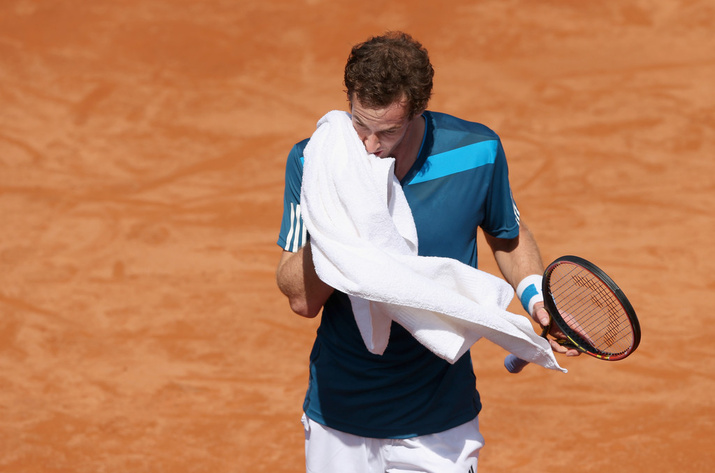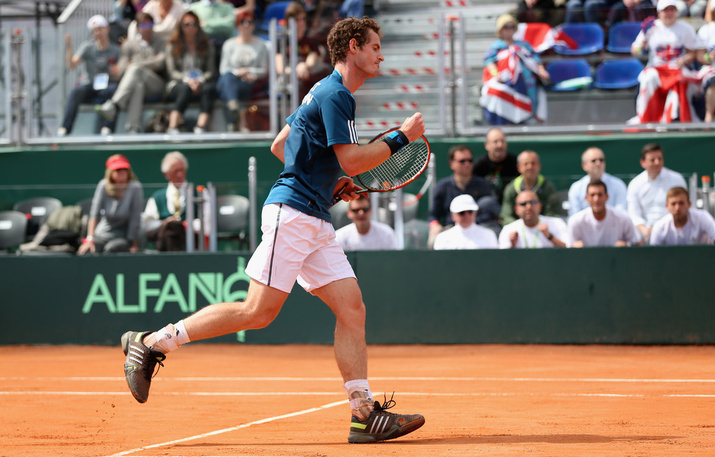Don't miss any stories → Follow Tennis View
FollowWhy Andy Murray Has Struggled on Clay
Andy Murray has never won an ATP clay tournament. In fact, Murray has never even reached the final of an ATP clay tournament. For a player of his caliber, such a record is nothing short of shocking.
In theory, the Brit has all the attributes of a great clay-court player. He moves well, his retrieval skills are wonderful, he can outlast opponents from the baseline, and he is a competent point constructor.
So, what’s the problem? Why hasn’t Murray achieved on a surface that would seemingly suit his style of play?

It all begins with his court positioning. Murray positions himself much too far behind the baseline on clay. While this is a strategy that most players employ on clay, it simply doesn’t work for Murray. Of course, it’s important to step back and provide some context to the situation. Murray can stand five to seven feet behind the baseline and defeat almost 90 percent of the opponents he will face on clay. A perfect example of this was his match against Gilles Simon last year in Madrid. Murray grinded out Simon in a match that went to a final-set tiebreak and lasted until 1 A. M.
It’s when he faces the top players that he begins to get in trouble. Murray would be making a mistake if he believes he can defeat his primary adversaries, namely Novak Djokovic and Rafael Nadal, if he continues to play points from miles behind the baseline.
Once camped out well behind the baseline, Murray further undermines his chances against the elite by playing a topspin-predicated game. He plays with too much margin and fails to flatten out enough shots. Again, this is fine against most players. But his counterpunching tendencies on clay don’t translate to success against the top players. For a man who mostly plays clay tournaments on the ATP 500, Masters 1000, or Grand Slam level, it’s easy to see why he isn’t winning any titles there.
Last year in Monte Carlo, for example, Murray barely scraped together three games in a 6-1 6-2 defeat at the hands of Stanislas Wawrinka. This match was basically batting practice for Wawrinka as Murray was feeding him short ball after short ball, all of which were sitting up into Wawrinka’s strike zone. It was a feast for the Swiss.
In Murray’s younger days, he was recognized as an overly passive player on all surfaces. Transforming into an increasingly aggressive player on hard courts and grass propelled him to titles at the US Open and Wimbledon. The Murray of old had provided his opponents with too many chances to seize the moment. This issue still persists with Murray on clay.
To be clear, Murray is a very solid clay-court player. He’s won over 60 percent of his ATP matches on clay, a percentage that most players would relish. In 2011, Murray took a set off Nadal in Monte Carlo, something that has only been done 11 times. A few weeks later, Murray served for the match against an undefeated Novak Djokovic in Rome before losing in a third-set tiebreak. In both of those matches, Murray played more offense and went into the match looking to win rather than not to lose.

Murray needs to defy conventional wisdom and start playing on clay as if he were playing on grass. The only way he will ever be a winner on clay—or any surface—is if he is consistently aggressive against the top players, something that his successes at the US Open and Wimbledon proved. He can’t afford to play an aggressive quarterfinal and then a passive semifinal, regardless of his opponent. Every match needs to be taken, not given.
There are only two men who can win major tournaments on clay with defense and consistency, and Murray is not one of them. Djokovic and Nadal have extremely unique skillsets that allow them to make shots and put balls back into play that ordinary mortals have no shot of pulling off.
Will Andy Murray ever win the French Open? Probably not. Does anyone expect Andy Murray to ever win the French Open? Let’s hope not. But most people also would not expect Andy Murray to end his career with zero clay titles or even final appearances for that matter.
While the competition is undoubtedly tougher than ever for Murray, the biggest obstacle in his way is himself.










